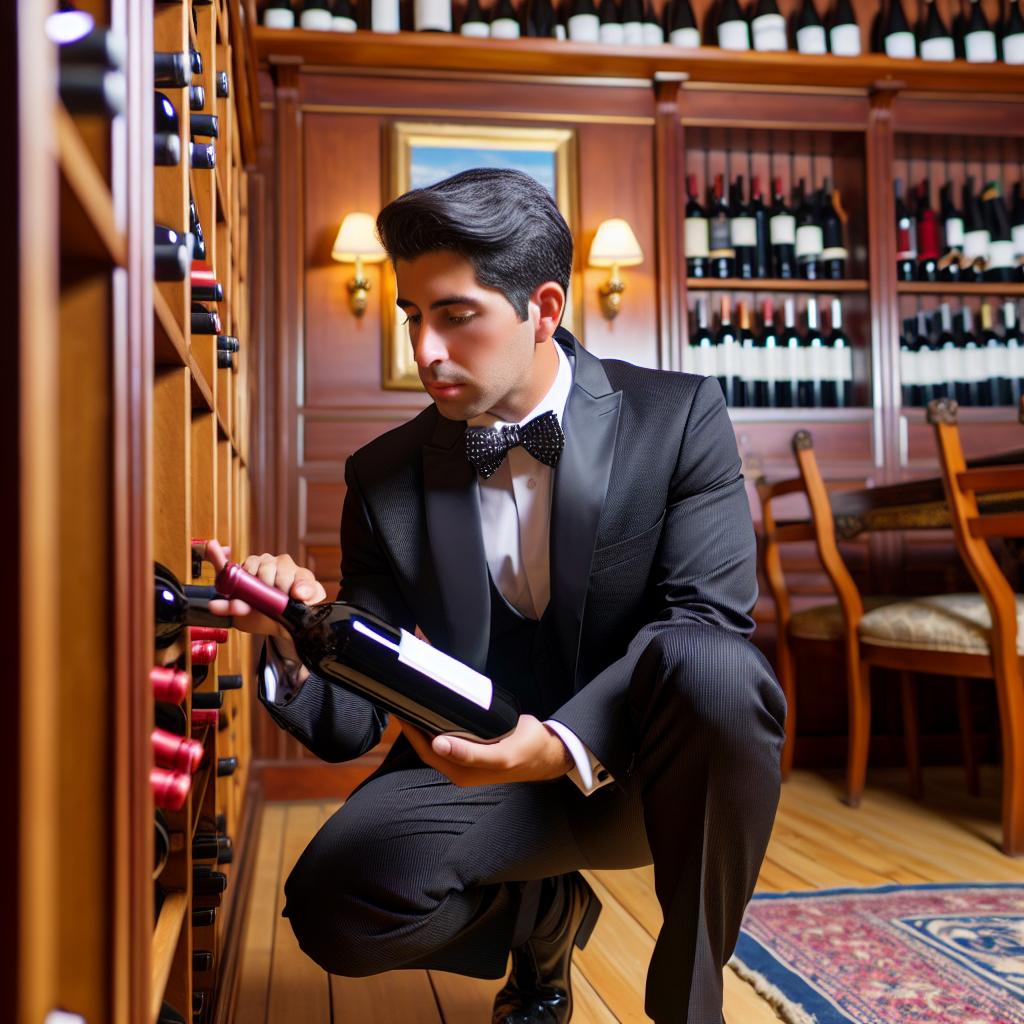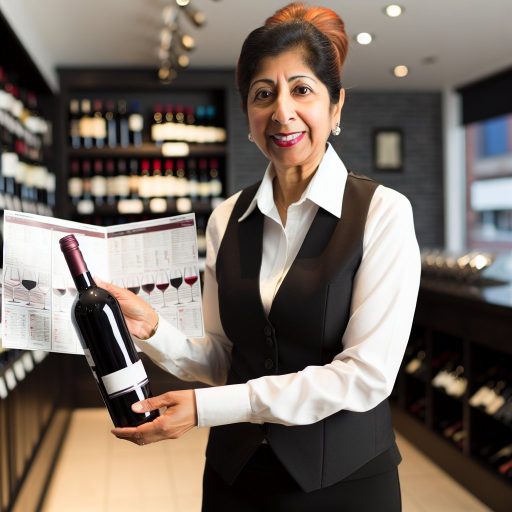Understanding the Role of a Sommelier in Fine Dining
Definition and Responsibilities
A sommelier specializes in wine service and pairing.
Their primary role is to enhance the dining experience.
They possess extensive knowledge of wine regions and varieties.
Moreover, they stay updated on new releases and trends.
Wine Selection Process
The wine selection begins with understanding the menu.
Sommeliers consider the flavors and ingredients of the dishes.
They also assess the restaurant’s concept and clientele.
Furthermore, they assess seasonal availability of wines.
Pairing Techniques
Pairing food with wine requires skill and intuition.
Sommeliers use complementary and contrasting flavors.
For instance, rich meats pair well with bold reds.
Additionally, light seafood often matches crisp whites.
Customer Interaction
Effective communication is vital for a successful sommelier.
They engage with guests to understand their preferences.
Sommeliers educate diners about wine choices and regions.
Furthermore, they provide recommendations tailored to individual tastes.
Training and Expertise
Formal education in wine is essential for sommeliers.
Many pursue certifications from recognized institutions.
Experience in various dining environments enhances their skills.
They often taste numerous wines to refine their palate.
Continuous learning is crucial in this ever-evolving field.
Impact on Fine Dining
A sommelier significantly elevates the dining experience.
They create memorable moments through thoughtful pairings.
Additionally, their expertise can boost restaurant reputation.
Ultimately, they play a vital role in culinary enjoyment.
Unlock Your Career Potential
Visualize a clear path to success with our tailored Career Consulting service. Personalized insights in just 1-3 days.
Get StartedWine Selection Process
Assessing Food Pairings
Wine selection begins by evaluating the dishes being served.
This assessment includes understanding flavors, textures, and ingredients within the food.
Next, consider the method of preparation for each dish.
For example, grilled meats pair well with bold wines.
Conversely, delicate fish often pair better with lighter wines.
Flavors and Aromas
Wine should complement the dominant flavors in the food.
Take into account both primary and secondary flavors.
For instance, buttery dishes may need a wine with similar richness.
Aromatic herbs can influence the wine choice as well.
Acidity and Tannin Levels
Assessing acidity in wine is crucial for proper pairing.
A dish rich in acid often requires a wine with higher acidity.
Tannins play a significant role, especially in red wines.
High-tannin wines can enhance the flavor of fatty meats.
Personal Preferences and Trends
Consider the preferences of guests when selecting wine.
Some diners may have specific favorites that should be incorporated.
Staying informed about current trends can also guide selections.
For instance, organic or biodynamic wines are gaining popularity.
Creating a Balanced List
Balance is vital in crafting a wine list for fine dining.
A well-structured list includes various options across price points.
Diversity in varietals ensures there is something for every palate.
Include both familiar wines and unique selections to intrigue guests.
Evaluating Wine Quality
Tasting Techniques
Tasting wine involves multiple senses and essential techniques.
First, observe the wine’s color and clarity.
Next, swirl the glass gently to release aromas.
Then, take a moment to inhale the fragrant notes.
After that, take a small sip and let the wine coat your palate.
Finally, savor the finish and note the aftertaste.
Criteria for Evaluation
Several key criteria determine the overall quality of a wine.
Balance is crucial; all flavor components must harmonize.
Next, consider complexity, which reveals layers of taste.
Length indicates how long the flavors linger after tasting.
Intensity refers to the strength of aromas and flavors.
Finally, the finish describes the wine’s aftertaste experience.
Common Aromas and Flavors
Aromas and flavors vary widely across different wine varieties.
Citrus notes often appear in bright white wines.
Red wines may exhibit berry, pepper, or earthy undertones.
Furthermore, oaked wines can present vanilla or toasty flavors.
Knowing these characteristics enhances the tasting experience.
Identifying Quality Indicators
Look for specific indicators of quality in wines.
Origin plays a key role; reputable wine regions often produce better wines.
Additionally, vintage can influence quality due to weather conditions.
Lastly, the producer’s reputation reflects their dedication to quality.
Explore Further: The Role of a Front Desk Agent in Hospitality
Exploring Regions: How Geography Affects Wine Selection
The Importance of Terroir
Terroir encompasses the environmental factors affecting wine production.
It includes climate, soil, and geography.
These elements influence the flavor and character of the wine.
For instance, wines from cooler regions are often more acidic.
In contrast, warmer regions can produce bolder, fruitier wines.
Regional Characteristics
Every wine region has its unique climate and conditions.
The Mediterranean climate fosters vibrant, fruity wines.
Meanwhile, continental climates typically yield wines with depth and complexity.
Coastal regions benefit from maritime influences, enhancing freshness in wines.
Varietals and Their Connections to Geography
Specific grape varietals thrive in particular regions due to soil and climate.
For example, Cabernet Sauvignon excels in warmer areas like Napa Valley.
In contrast, Pinot Noir flourishes in cooler climates like Burgundy.
Sommeliers must consider these connections when curating wine lists.
The Role of Local Regulations
Many regions have strict regulations regarding wine production.
These regulations can dictate which varietals can be grown.
Wine classifications, like DOC and AOC, ensure quality standards.
Understanding these classifications helps sommeliers make informed selections.
Emerging Wine Regions
New wine regions are gaining recognition worldwide.
Regions like South Africa and New Zealand are making waves in the wine market.
Sommeliers are eager to explore these innovative areas.
Consequently, they often incorporate these wines into fine dining experiences.
Discover More: How To Create A Relaxing Spa Experience
Keeping Up with Trends
Navigating the Evolving Wine Market
Sommeliers constantly monitor shifts in the wine market.
They pay attention to consumer preferences and emerging trends.
Furthermore, they attend wine fairs and tastings to stay informed.
This proactive approach enhances their knowledge base.
Emerging Varietals and Regions
New varietals gain popularity every year.
For instance, lesser-known grapes attract adventurous diners.
Additionally, regions such as Georgia and Wales are gaining recognition.
Sommeliers often explore these areas to diversify their offerings.
Understanding Consumer Preferences
Today’s consumer seeks unique and memorable experiences.
They often prefer organic and biodynamic wines.
Moreover, sustainability plays a crucial role in purchasing decisions.
Therefore, sommeliers incorporate these preferences into their selections.
Utilizing Technology and Data
Advanced technology aids sommeliers in their selections.
Data analytics provide insights into consumer behavior.
Apps and software streamline inventory management.
These tools enhance the overall wine selection process.
The Role of Social Media
Social media significantly influences wine trends.
Popular platforms showcase wine pairings and recommendations.
This creates buzz around specific wines and regions.
Sommeliers must remain active online to stay relevant.
Collaboration with Chefs
Collaborating with chefs helps sommeliers curate wine lists.
This partnership ensures wine complements the dining experience.
It also fosters a synergy between food and wine selections.
Sommeliers often seek feedback from chefs to refine choices.
Discover More: Managing Finances As A Spa Manager

Building a Balanced Wine List
Diversity in Wine Selection
When curating a wine list, diversity is essential.
This diversity engages diners and enhances their experience.
Sommeliers aim to include a wide range of varietals.
Moreover, sourcing wines from different regions adds variety.
International selections provide unique tasting opportunities.
Local wines can also showcase the region’s terroir.
Furthermore, balancing red, white, and sparkling options is crucial.
By doing this, a sommelier ensures everyone finds something appealing.
Considerations for Variety
Variety in flavor profiles caters to different palates.
This can include light, fruity whites to rich, full-bodied reds.
Moreover, sommeliers consider sweetness levels in wines.
Some diners may prefer dry options, while others enjoy sweetness.
It’s important to match wines with menu offerings too.
This approach enhances the overall dining experience.
Additionally, seasonal variations should influence wine choices.
Fresh, crisp whites are perfect for summer dining.
During winter, full-bodied reds often take center stage.
Price Range and Accessibility
A balanced wine list must also consider pricing.
Including wines at various price points ensures accessibility.
This allows different budgets to be accommodated.
Value-oriented options will attract a wider clientele.
High-end selections appeal to connoisseurs seeking luxury.
Transparency in pricing promotes trust with clientele.
Additionally, offering tasting flights can introduce guests to new wines.
This initiative encourages experimentation and discovery.
See Related Content: How Front Desk Agents Contribute to Team Success
Sustainability and Sourcing: Ethical Wine Selection Practices
Understanding Ethical Sourcing
Ethical sourcing ensures that wines support environmental and social sustainability.
Sommeliers prioritize producers who respect both land and labor.
This approach encourages responsible farming and fair labor practices.
Criteria for Selecting Sustainable Wines
Several key factors influence a sommelier’s choice of sustainable wines.
- Organic and biodynamic certifications are essential indicators.
- Producers must implement water conservation methods.
- Renewable energy usage is a favorable factor.
- Minimal intervention in the winemaking process is ideal.
Collaborating with Local Producers
Building relationships with local producers enhances wine selection.
Local sourcing reduces transportation emissions.
Additionally, it supports the regional economy and community.
Effective collaboration leads to shared knowledge about sustainable practices.
Understanding the Impact of Wine Selection
Every bottle of wine has an ecological footprint.
Sommeliers consider the environmental impact of their selections.
By choosing sustainable wines, they promote environmentally-friendly practices.
This commitment can influence consumer choices and perceptions positively.
Educating Guests on Wine Choices
Education plays a crucial role in ethical wine selection.
Sommeliers strive to inform guests about sustainability.
They share the stories behind the wines, enhancing the dining experience.
Guests often appreciate knowing the origins and practices of their wines.
Communicating with Guests: The Art of Wine Recommendations
Understanding Guest Preferences
Effective communication starts with understanding each guest’s preferences.
Ask open-ended questions to gauge their tastes.
For example, inquire about their favorite food or beverage.
This provides insight into their wine preferences.
Building Rapport
Establishing a connection with guests enhances their dining experience.
Use a friendly tone to engage with them.
Compliment their choices to make them feel valued.
This personal touch encourages guests to trust your recommendations.
Creating Tailored Recommendations
After gathering information, craft recommendations that suit their tastes.
Consider the meal they intend to order.
Pair wine selections that complement their choices.
For instance, suggest a light white wine for seafood dishes.
Using Descriptive Language
When describing wines, use vivid and appealing language.
Highlight unique characteristics and flavor profiles.
This engages the senses and piques curiosity.
For example, describe a wine as “fruity and aromatic” to attract interest.
Providing Context
Contextualize your recommendations by sharing brief stories.
Discuss the vineyard’s history or winemaking process.
This adds depth to the guest’s experience.
Connecting wine choices with interesting anecdotes enhances enjoyment.
Encouraging Feedback
Invite guests to share their thoughts on the wine.
Feedback helps refine future recommendations.
Encourage them to express whether they enjoyed their selection.
This interaction builds rapport and shows you care.
Handling Difficult Choices
Some guests may feel overwhelmed by wine options.
Be patient and assist them in making decisions.
Provide a few recommendations and allow them to choose.
Assure them that any selection will enhance their dining experience.
Staying Informed
Continuous education about wines is essential for success.
Attend wine tastings and keep up with industry trends.
Staying informed enhances your confidence in making recommendations.
This knowledge increases guest satisfaction and loyalty.




